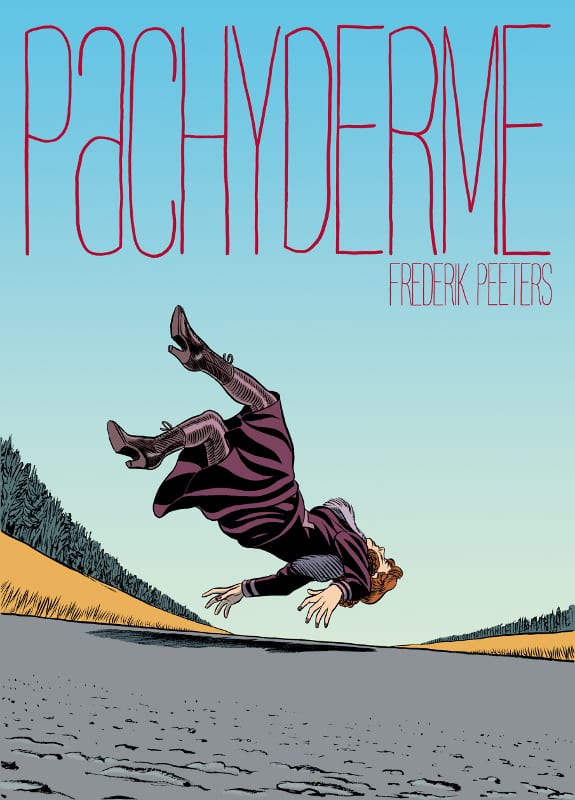If Katie Skelly’s Nurse Nurse represented a young artist stretching her limits in her first major work, then her follow-up book, Operation Margarine, sees Skelly working more in her comfort zone. There were times in Nurse Nurse when it seemed that Skelly wasn’t entirely comfortable drawing certain aspects of her Barbarella-inspired space fantasy. She simply didn’t have the chops to convey some aspects of the story, which led to some whiplash narrative shifts. That said, she still followed through and worked around her limitations as best as she could. Cartooning can be seen as a series of problem-solving exercises, and Skelly presented herself with a high degree of difficulty with her first book.
Operation Margarine resembles Nurse Nurse in the sense that it revives another set of fashion and genre tropes from the 1960s: the mod biker story. It plays to Skelly’s strengths because her real talent lies in the decorative aspects of cartooning, focusing on character poses, fashions and overall body language. The desert provides a minimalist backdrop for much of the series, eliminating more troublesome background drawing details while heightening the actual character designs on each page. At just over a hundred pages, this is a graphic novella that doesn’t outstay its welcome while still providing the completion of the protagonist’s transformation.
The book opens with Margarine (“rich girl runaway”) and Bon-Bon (“trouble tuff girl”) out in front of a desert bar, vultures circling ‘round. Skelly plays up the pulpy and delightfully affected feel of her characters, their interactions and their adventures. From there, Skelly flashes back and forth in time, as we get just information about Margarine and Bon-Bon to get a sense of why each of them wanted to escape their old lives. In Margarine’s case, it was being in and out of mental institutions (anorexia is hinted at). In Bon-Bon’s, she had a tendency to fool around with the wrong kind of guy and had a lot of people very angry at her. Getting the duo out into the desert allows Skelly the opportunity to introduce all sorts of fun, pulpy elements: images of the open road, mysterious guys with scars and stylish women with different-colored eyes who are out to hassle them. There are motorcycle and arms dealers in the middle of the desert and a funny diner scene wherein a long-suffering waitress is entirely unimpressed by the duo, making the reader want to know more about her story.
Skelly loves combining glamor and menace, as Bon-Bon exudes that on every page. The way she draws huge and expressive eyes is a particular draw, especially since they are never cute. Rather, Bon-Bon’s big almond eyes have a vague hint of menace, whereas Margarine’s rounder eyes express a wide variety of emotions but at their core have a glint of madness. She’s the sort of character who’s been broken for so long that she’s looking for someone to put her back together and a chance to reinvent herself. That’s precisely what happens in the brutally visceral climax of the book, one where Margarine is reborn as precisely the kind of bad-ass she always wanted to be, but at great cost.
Skelly’s line and composition is quite assured even as she plays to her strengths: character design, gesture and body language. She minimizes background detail in such a way that it’s not lacking on the page when needed, but doesn’t interfere with the two leads when she wants the reader to zero in on them. The cover of this paperback is simple, with Margarine posing on the front cover smoking a cigarette, giving the reader a smirk. The overall design is deceptively simple, as is everything about the book. It’s an homage to loner biker movies, but one that’s gender-flipped. The male characters in the book are almost entirely incidental and decorative at best. The book can be read as a straightforward action story or as a commentary on the traditional role of women in those sorts of narratives. There are moments of humor, but this book is not a farce: Skelly is deadly serious when it comes to portraying her characters’ fates. The imagery is frequently static, especially in terms of panel-to-panel transitions, because Skelly wants the reader to focus on each individual image qua image as much as she wants the reader to follow the simple narrative. For Skelly, style is substance.










